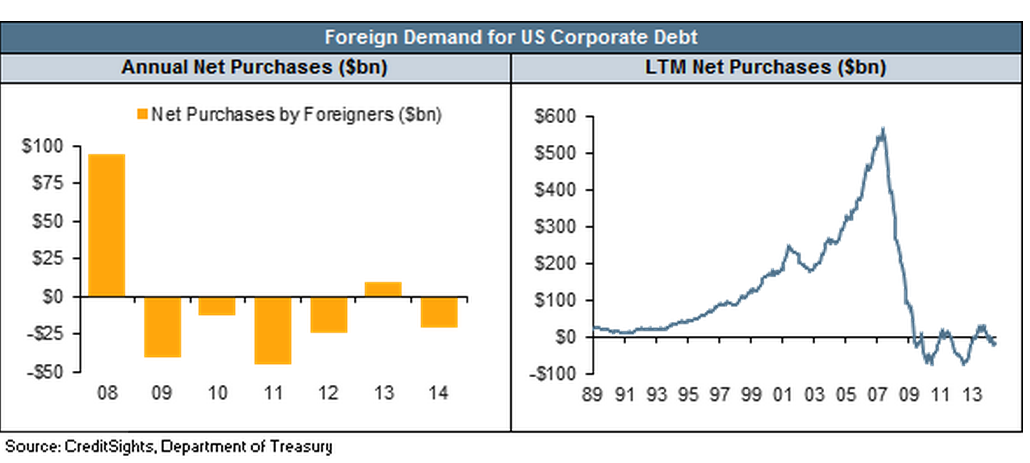Buying corporate bonds on the cheap
Post on: 20 Апрель, 2015 No Comment

Interactive Investor — by Peter Temple
There was a spell, several years ago, when corporate bond funds were distinctly ‘flavour of the month’ with investors. Fund management groups catered to this appetite by launching a plethora of new funds, some of which have since had a chequered history. It doesn’t usually pay to be late getting on any investment bandwagon. This one was no exception.
But, in all the recent furore about the credit crisis, there has been little comment about corporate bonds. And it’s probably the case that some have been left behind by events. At the very least, it’s a market where there could be some profitable anomalies.
There are several aspects to investing in corporate bonds. One is whether you look to invest in a portfolio of bonds, through a fund. This is often the best way. But if the amount you want to commit is large enough for you to be able to get decent diversification, you can always invest direct.
Leaving aside the mechanics of this for a moment there are two basic parameters you need to look at when assessing corporate bonds. The first is credit quality. With gilts there is no practical risk of default. But in the case of a corporate bond, the possibility of default, though generally small, is real enough. The way to measure credit quality is to look at a bond’s credit rating.
Most rating agencies rank the quality of issues by means of letters. AAA (triple A) meaning the best quality, with minimal risk of default, down through AA, A, BBB, BB, B and so on. Bonds rated worse than B are generally very high risk indeed and in the current climate carry an uncomfortably high risk of default on either interest payments or repayment of capital.
The point about corporate bond investment is that it is an exercise in balancing yield on the one hand with risk of default on the other. A lower quality bond will have a high yield, but a much higher risk of default. Short dated bonds in Network Rail, rated AAA because of an implicit government guarantee, yield 4.1% at present. This yield is not much higher than the yield on the equivalent gilt. Long-dated bonds in Vodafone, rated A-, yield 6.94%. This encapsulates a dimension of the difference in risk involved. Not that Vodafone is at all likely to default, but equally there are no guarantees in place, implied or otherwise.
The long or short of it?
The other investment decision is whether you want a short dated or long dated bond. Longer dated yields tend, other things being equal, to be higher than shorter dated ones. But do you want a longer dated bond in a riskier company, or a shorter dated bond in a safer one?
Investing in corporate bonds also has to take into account the lags in the effect the economic cycle has on the viability of certain companies. Recent bond defaults have been at a relatively low ebb, but a typical cyclical peak in defaults could see many more issuers go bust and continue to affect confidence in corporate bonds for some time.
According to one recent survey in the US yields on corporate bonds are now such that around 6% of corporate debt issuers are expected to go bust, the highest predicted default rate since the 1930s. In that era the default rate hit 8.6%. Recent experience in the recovery rates that investors could expect on defaulted bonds suggest that all but the extreme worst case scenario has been priced into corporate bonds. So buying now could be the right thing to do.
We need to strike a note of caution here, however. Recent events in the banking sector and in the US automotive industry have shown how even iconic institutions can go from being seemingly in relatively rude health to being corporate basket cases virtually overnight. By common consent the recent credit crisis has been the worst in history. The only reason not to expect a repeat of the 1930s, and in particular the high default rates that accompanied it, is that government policy responses have been rather different and much more positive for the financial health of banks and the corporate sector generally.
In this environment, lower rated bonds have still sharply underperformed those of more solid issuers. That means that while many corporate bonds may seem cheap, it takes a skilled eye to spot precisely which ones really are as cheap as they seem.
Peter says
The bond market, particularly in a lower interest rate environment, is one way that corporates can raise cash when banks are reluctant to lend. It’s not ideal, because they may ultimately have to pay more in terms of interest coupons than they would raising short term instruments like commercial paper.
The current risks in the bond market are such that buying exposure to corporate debt is best done through a fund, either an active one or a passively managed exchange traded fund. Buying a corporate bond index through an exchange traded fund gets around the objection to many actively managed bond funds, namely that the charges can deplete the yield to the point where straightforward buying of gilts might be a simpler option.
For example, the passively managed sterling denominated corporate bond fund from iShares is currently yielding 8.5%, a 4.3 percentage point improvement over the 10-year gilt yield, which shrinks slightly to a 4.1 percentage point pick-up in yield when an annual 0.2% annual management charge is deducted.
That sounds attractive. But beware. The portfolio is heavily overweight in bank bonds, so the yield premium is perhaps rather less surprising. The euro denominated equivalent yields a less spectacular, but arguably more secure, 6.1%.














